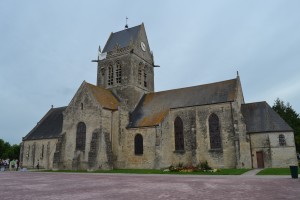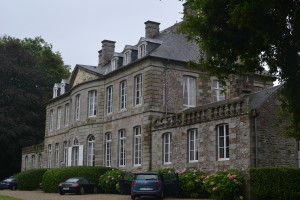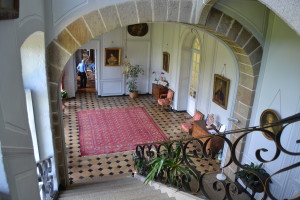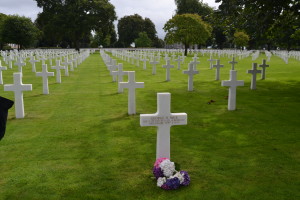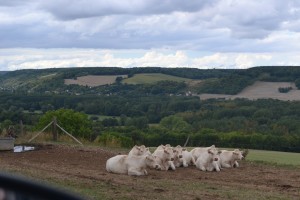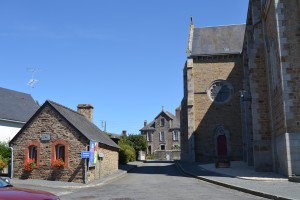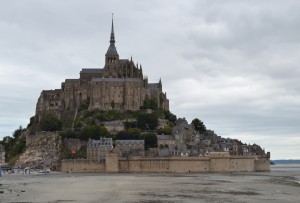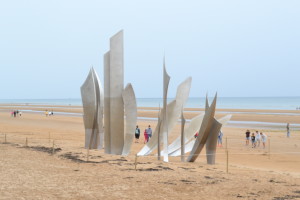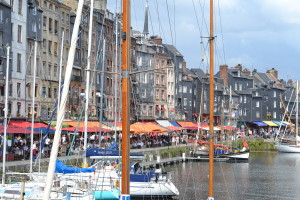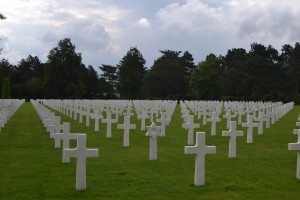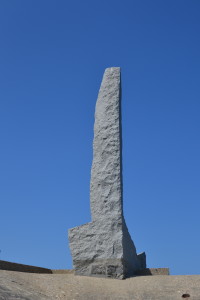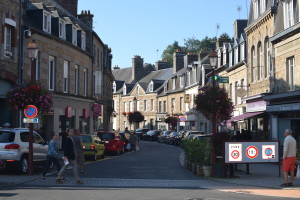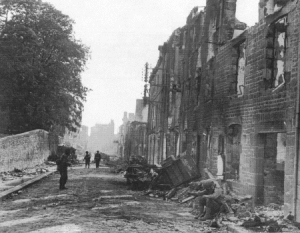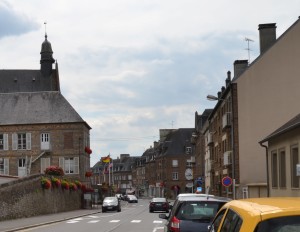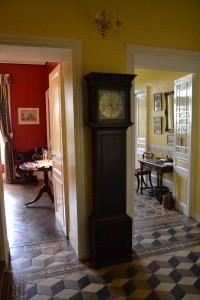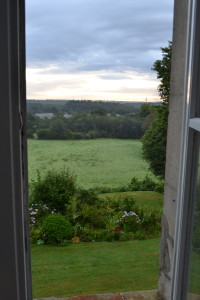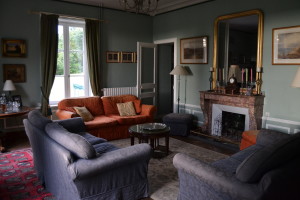Normandy and Paris – Part 2
After spending 3 terrific nights with Colonel Ed and his wife, Sharon, we headed for our next bed and breakfast. But first, we stopped in the town of Saint Mere Eglise, one of the first towns freed from the Germans in WWII. There is a church in the town square where paratroopers of the 82nd Airborne Division landed in error due to foul weather. Many paratroopers were killed and captured in the square. One paratrooper got hung up on one of the steeples of the church and pretended to be dead. He witnessed the carnage below and was captured by the Germans but later escaped. To this day, an effigy of Private John Steele hangs from the steeple.
Our next B&B was in a château owned and operated by a real French Count. When we arrived, he immediately began speaking French to us. With our feeble and rusty high school French, we gave a few answers which seemed to please him. From then on, he spoke nearly perfect English. He ”joked” that he was testing us.
The chateau was enormous and we had a huge room with a separate dressing room and a very large and modern bathroom. Paintings of the count’s ancestors hung on the walls and French Provincial furniture graced the room. The Count was a font of tales. He told us about the time when he was a child and his father was arrested by Germans in the foyer of the château when it was taken over for the use of Wehrmacht officers. The family had to live in the stables during the German occupation.
His father was a member of the French Resistance and the Count had some harrowing war stories.
The Count takes care of the grave of an American soldier killed in WWII and buried in the Brittany American Cemetery in St. James, France. He prepared a beautiful bouquet of flowers from his garden for us to take to the cemetery and place on the grave.
According to the Count, the château is haunted. Our friend, John had a close encounter with the ghost.
We continued to visit the Norman towns and villages where my uncle fought with the 3rd Armored Division until he was killed in action near Paris. Most of the towns were pretty much destroyed during the war but have been completely rebuilt. Normandy is largely farm country with apple orchards, corn fields and lots of cows. R oads are two lane with very little traffic.
We made a planned diversion to Mont Saint-Michel, the second most visited site in France (the Eiffel Tower is number 1). It is an active Benedictine abbey located on an islet. The original church structure was completed in 1144 and more structures were added in the 13th century. At low tide, one can walk about 600 meters from the mainland to the islet. However, unless you have a guide, this is not recommended because there are areas of quicksand. People have lost their lives when they got stuck in the quicksand and the tide came in. The tide difference between high and low tide can be as much as 45 feet and it comes in real fast. We did it the easy way. We parked our rental car in the main parking lot and took a shuttle bus on the recently completed bridge to a point very close to the massive structure.
We’ll post more about our trip to Normandy & Paris in a few weeks. Stay tuned!
Normandy and Paris – Part 1
My uncle landed on Omaha Beach less than a month after D-Day. He was killed in action less than two months later near Paris. Seventy-one years later, my cousin, Richard, and I planned a trip to France where we would tour the towns and villages where he fought until his death. We left Philadelphia, together with my wife, Rachelle, and John, a friend of Richard’s, in mid August on our two week pilgrimage.
I won’t dwell on the details of the battles fought by my uncle but I would like to share our experiences in France. During our two weeks in France, we stayed in three bed and breakfasts (Normandy) and one apartment (Paris). This virtually insured that we would mingle with the local residents and, equally important, would keep our costs under control.
As we left Charles De Gaulle airport in our rented car, we noticed that the French roads are in better shape than ours and are much cleaner (not so many McDonald’s wrappers along the hi-ways). We had some extra time before arriving at our first chateau, so we made a slight detour and headed to Honfleur.
Our first bed and breakfast was at a chateau owned by a retired Colonel in the British Royal Marines (Britain’s most elite warriors) and his wife, who was an expert in the history of Normandy, particularly its medieval history. This turned out to be perfect for us. We not only had a first rate experience at the chateau, but the Colonel drove us to Omaha Beach (where the Americans landed), Pointe du Hoc (made famous by the U.S. Rangers) and the American Cemetery. The quality of this tour was fantastic. While the colonel was much too young to have been part of the D-Day landings, being a military officer gave him insights that other guides simply cannot match. When you take a tour with the Colonel, your lunch is included and he eats with you and shares his experiences and answers your questions (another bonus).
On our second day with the Colonel, he drove us through many of the quaint villages where my uncle fought with the 3rd Armored Division. They look much different than they looked 71 years ago.
The Colonel and his wife’s bed and breakfast was not typical. We also got dinner as well as drinks before dinner and, if you are going on a tour with the Colonel, a talk by the Colonel on what you will be seeing the next day. The meals were prepared by a young Norman woman and were outstanding. The colonel’s wife, Sharon, had a wonderful sense of humor and she kept the conversation moving at dinner. Our rooms were spotless and had private bathrooms with plumbing more modern than most of our US hotels (this was true of all of the bed and breakfasts where we stayed as well as the apartment). If you are a history buff (WWII, British or French), and you want a welcoming place to stay, we highly recommend this chateau. For more information, call us.
Our 2nd Bed and Breakfast was more like a castle. It was immense and it was owned by a real French Count. We’ll post more about this B & B in 2 weeks. Stay tuned.

